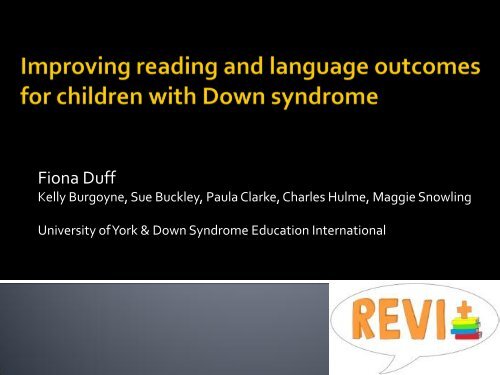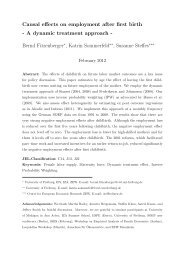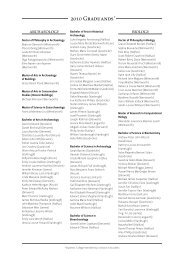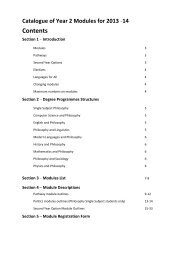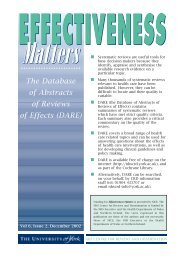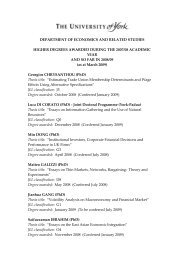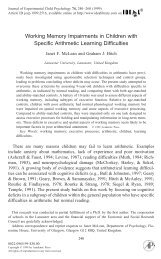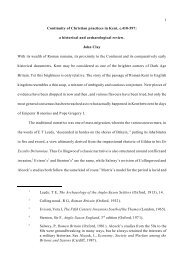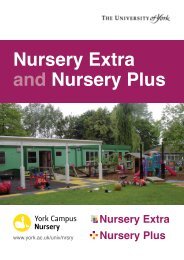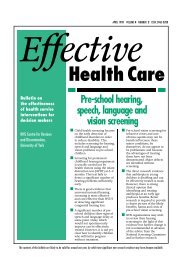5. Fiona Duff - REVI+ Down Syndrome research - University of York
5. Fiona Duff - REVI+ Down Syndrome research - University of York
5. Fiona Duff - REVI+ Down Syndrome research - University of York
You also want an ePaper? Increase the reach of your titles
YUMPU automatically turns print PDFs into web optimized ePapers that Google loves.
• To evaluate the impact <strong>of</strong> a reading andlanguage intervention programme on theliteracy skills <strong>of</strong> young children with <strong>Down</strong>syndrome• To equip educators with resources andknowledge to help develop literacy skills <strong>of</strong>children with <strong>Down</strong> syndrome
• Effective reading interventions• Combine training in (Hatcher et al., 2004, 2006)▪ letter knowledge▪ awareness <strong>of</strong> speech sounds (phonological awareness)▪ links between letters and sounds▪ book reading• Evidence suggests this approach works for childrenwith <strong>Down</strong> syndrome (Goetz et al., 2008)• But, this approach does not improve the reading skills<strong>of</strong> all children, with or without <strong>Down</strong> syndrome (Goetz etal., 2008; Hatcher et al., 2006)
• Spoken language skills• Non-responders tend to have additional weaknessesin vocabulary and grammar (Vadasy et al., 2008; Whiteley et al.,2007)• For such children, interventions that combine trainingin reading and language may be more effective (<strong>Duff</strong> etal., 2008)• Children with <strong>Down</strong> syndrome also have poor spokenlanguage (Abeduto et al., 2007)• A combined intervention approach may beparticularly effective for these children (Buckley et al., 1996;Burgoyne, in press)
• Daily 40-minute individual sessions, deliveredby trained teaching assistants• Fortnightly themes (10 sessions)• Teaching sessions (1 to 4, 6 to 9): new material• Consolidation sessions (5 and 10): reflect andreviseThe parkFoodWeatherTransportClothesMybodyCookingIn thehomeAnimalsOccupations
Reading Strand (20 mins)Reading easy level bookReading instructional level bookSight word learningLetters, sounds, phonologyIntroduce new instructional level bookLanguage Strand (20 mins)Vocabulary: Introduce new wordsVocabulary: Reinforce meaning <strong>of</strong> new wordsExpressive language: Use new words in connected speechExpressive language: Use new words in written language2-3 mins5 mins2-3 mins5 mins5 mins5 mins5 mins5 mins5 mins
Simple gain score12.0010.008.00InterventionControl6.004.002.000.00
Adjusted mean difference at t2 (controlling for t1)8.006.004.002.000.000.42-0.120.010.240.03 0.47 0.340.540.330.010.31-2.00-4.00-6.00-8.00-10.00-12.00
• Following 20 weeks <strong>of</strong> reading and languageintervention• Small but significant effects on:▪ Letter knowledge, word reading, phoneme awareness,expressive vocabulary• No transfer to:▪ Spelling, standardised tests <strong>of</strong> vocabulary, decoding• Next steps:• Outstanding data analyses (speech and language)• Replication in second group?
• Claudine Crane• Glynnis Smith• Elizabeth Fieldsend• Emma Truelove• Pam Baylis• Becky Baxter• Cara Hens• Laura Lewis• Louise Nasir• Faye Smith• Alex Petrou• Sarah Watson• Big Lottery Fund• Jolly Learning Ltd.• Jelly & Bean Ltd.• Gardner Ed.• POPs Resources• Not forgetting all theschools, teachingassistants, families andchildren, without whosehelp this <strong>research</strong> wouldnot be possible.


